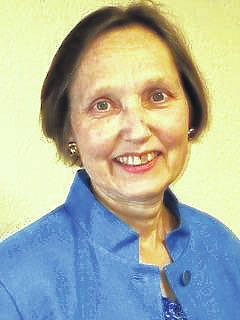
The world is indeed a many splendored thing filled with fascinating phenomena. When the jeweled colors of the rainbow glow in the sky, we gasp in wonder. Yet, even this continuum of color has but one source. As Isaac Newton first demonstrated by the clever use of prisms, all those rich colors are separated out from the pure “white” light of the sun. They appear to us as colors only because of certain structures in our eyes (cones) and the way that the brain interprets the signals from these structures. Our eyes respond selectively to light of particular wavelengths. Out of the entire electromagnetic spectrum, the sensitivity of our eyes is “tuned” to the wavelengths that produce this color response.
Why these particular wavelengths? Is it just a coincidence that the peak emission of the sun occurs right in those wavelengths to which our eyes are the most attuned? Not only that, but our earth’s atmosphere is also exceptionally transparent to those same wavelengths, while blocking significant amounts of both the ultraviolet (shorter) and the infrared (longer) wavelengths, some of which could harm us.
To return to the rainbow, we know from experience that it always forms the same precise shape, a piece of a perfect circle. Its colors always appear in exactly the same positions. Newton, who first formulated the correct theory of color, also discovered other laws of optics. He found various patterns in the way that light behaved by careful observation and systematic experiment.
He was searching for verifiable facts, consistent scientific truths. He followed neither the popular superstitions nor the “settled science” of his day. His own observations demonstrated to him that order and pattern were embedded in nature. He saw this as clear evidence of a purposeful Creator, and it was on this basis that his concept of scientific inquiry developed.
Fast forward to today: our lives are entwined with the fruits of scientific investigation. We rely almost constantly on technical devices of amazing complexity, perhaps too constantly. These are all based on the reliability of physical reality, the laws of nature, as they are generally called. Yet, we observe the rise of those willing to deliberately discard sound physical evidence in favor of artificial constructs, constructs which could even demand the destruction of actual physical reality.
Some in positions to teach and guide our children have abandoned their responsibility to lead their students toward the discovery of reliable truth, meaning, and purpose. Instead, these blind guides foist upon their charges an utterly false understanding, not only of themselves, but of the entire world in which they must find their way. The young are now led to believe that there are no discernable guiding principles. Each person is “free” to invent his own. Each must do so, for there are no fixed stars by which to navigate. What kind of betrayal is this?
The young and immature are now left to flounder directionless in a sea of confusion. Worse, they can be used as pawns to fulfill the hidden agendas of manipulative adults. This is not the promise of the rainbow. This is the abuse of hapless minors not experienced enough in the ways of the world to distinguish fact from fantasy. No responsible adult would cooperate in sending a child down such a hazardous path. Those who collaborate in the betrayal of our vulnerable youth must be removed from any position of influence. Parents, will you protect your children from the deceivers?


